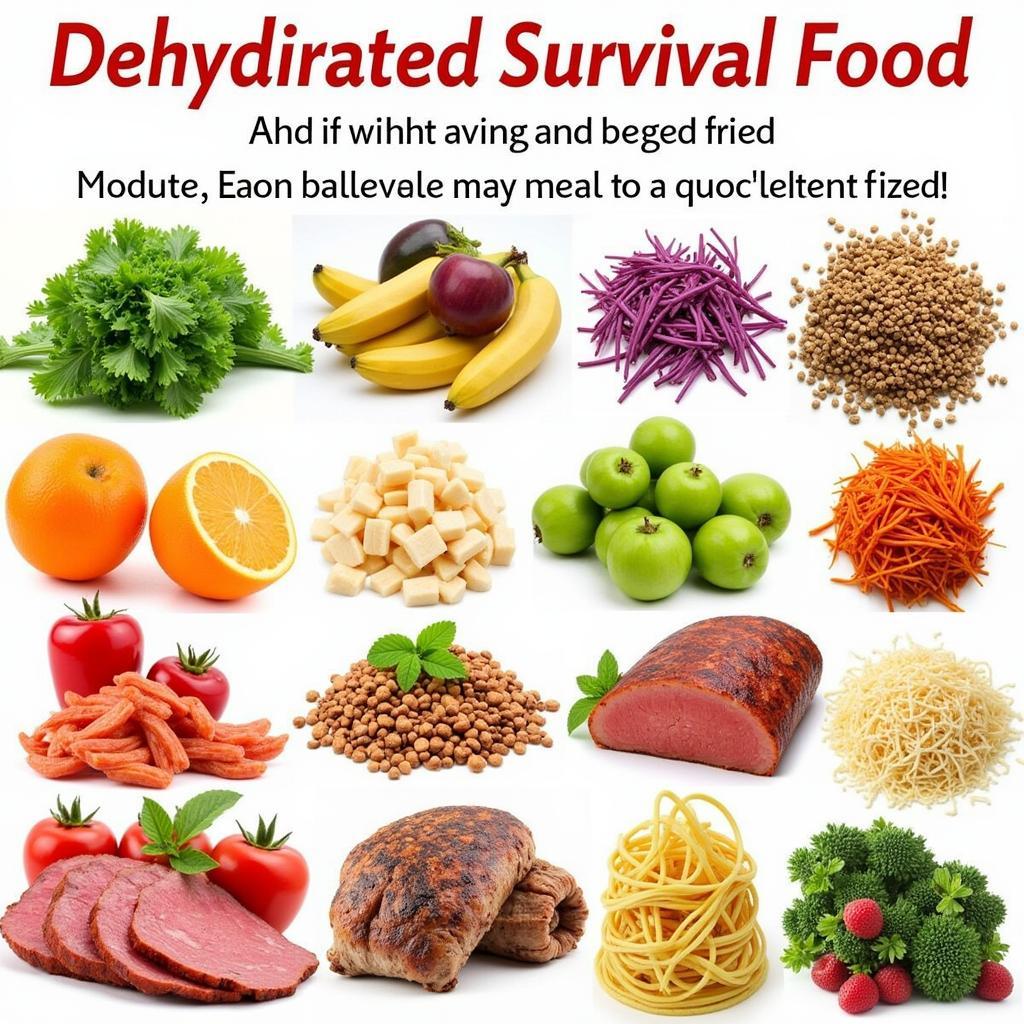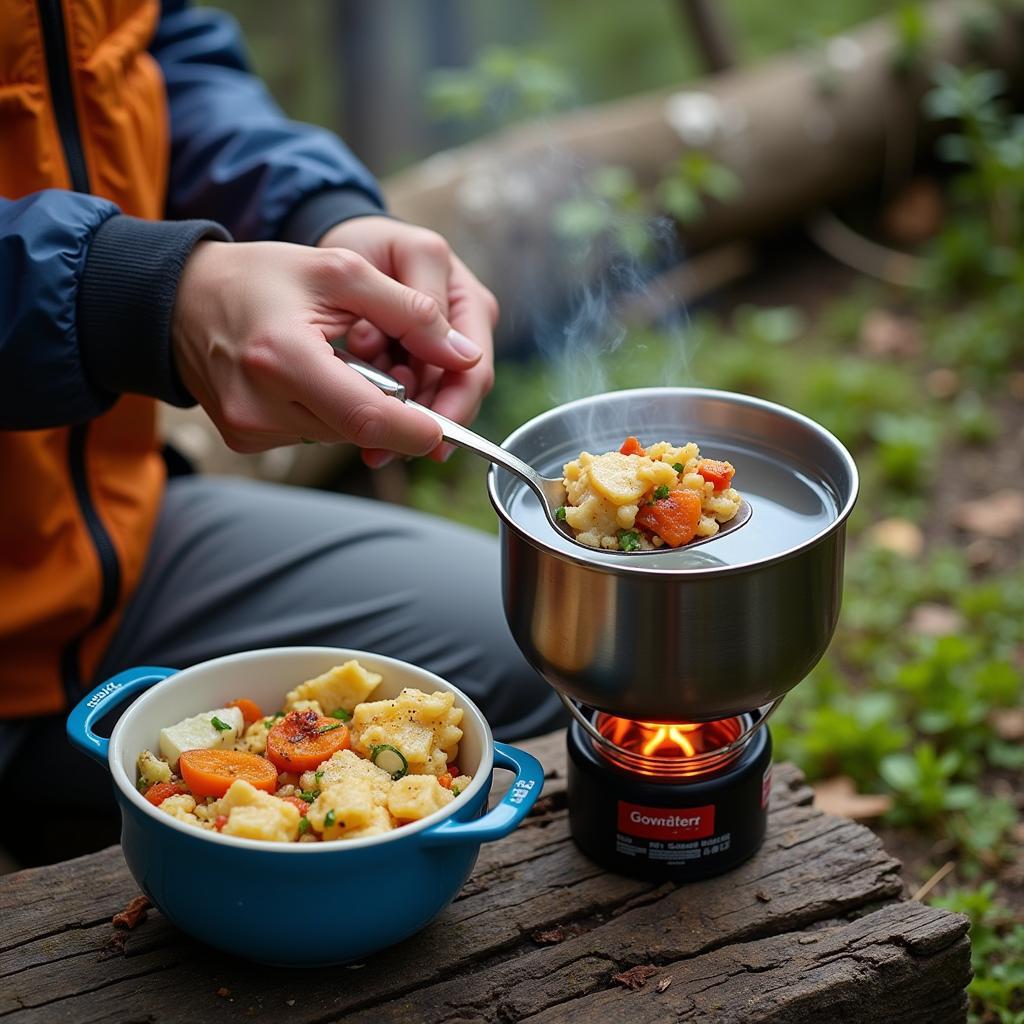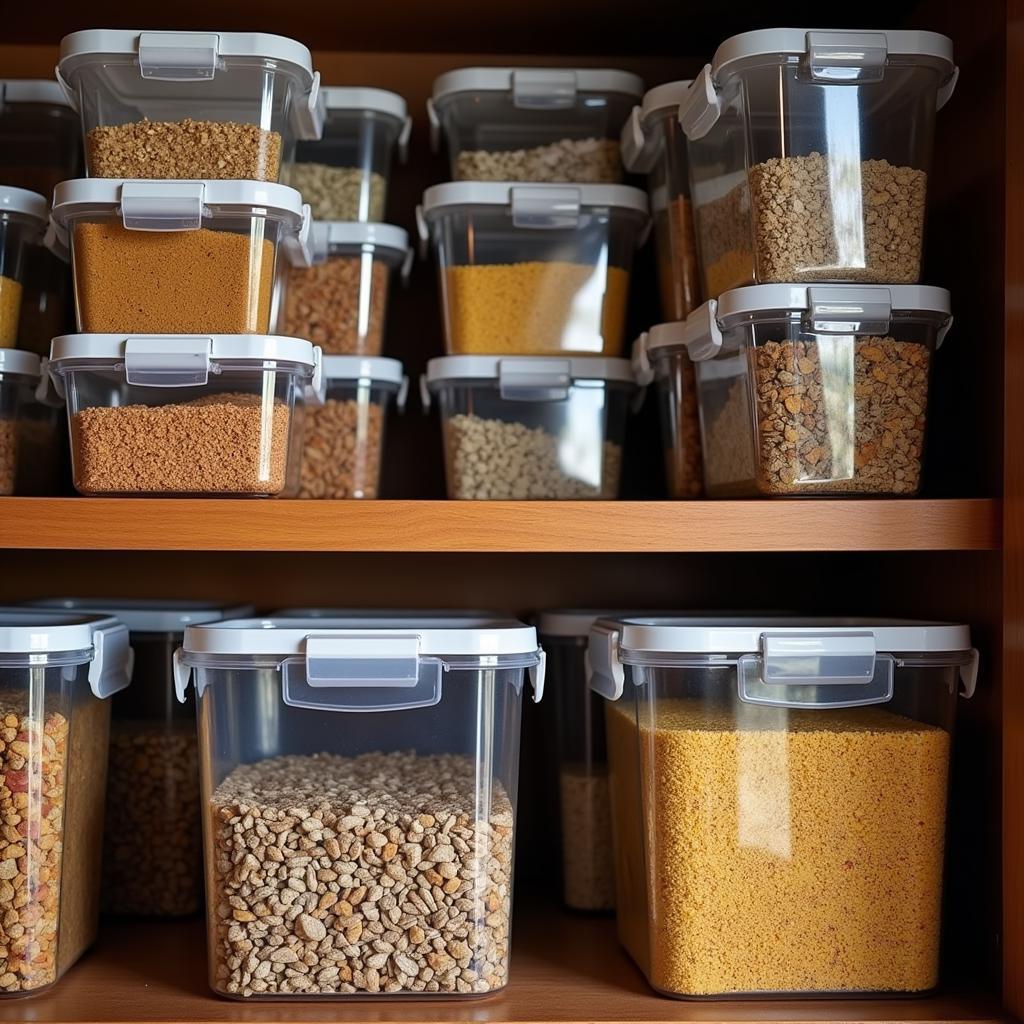Dehydrated Survival Food is a cornerstone of any comprehensive emergency preparedness plan. Whether facing a natural disaster, economic downturn, or unforeseen crisis, having a readily available supply of non-perishable food provides peace of mind and ensures you and your loved ones are nourished. This guide explores the benefits, varieties, storage, and preparation of dehydrated survival food, equipping you with the knowledge to make informed decisions for your future security. Learn how to build a resilient food supply that stands the test of time and keeps you prepared for any eventuality.
Why Choose Dehydrated Survival Food?
Dehydrated survival food offers a multitude of advantages over other preservation methods, making it a popular choice for preppers and outdoor enthusiasts. Its long shelf life, lightweight nature, and ease of preparation make it an invaluable asset in emergency situations. Unlike canned goods, which can be heavy and bulky, dehydrated meals are compact and easy to transport, especially vital in a bug-out scenario.
One of the primary benefits of dehydrated food is its extended shelf life. By removing the moisture, the growth of bacteria and mold is significantly inhibited, allowing these foods to last for years, even decades, when stored properly. This long-term storage capability makes it a cost-effective investment, reducing food waste and ensuring you have a reliable food source in times of need. This is especially helpful for those looking to buy survival food in bulk.
Storing dehydrated food is remarkably straightforward. Sealed in airtight containers and kept in a cool, dark, and dry environment, these provisions will remain stable for extended periods. This simplicity is a key advantage, requiring minimal effort and resources to maintain your emergency food supply. Plus, for those with dietary restrictions, finding gluten free dairy free survival food options in dehydrated form is increasingly easier.
 Variety of Dehydrated Survival Food Options
Variety of Dehydrated Survival Food Options
Building Your Dehydrated Survival Food Stash
Creating a well-rounded stockpile of dehydrated survival food requires careful consideration of your individual needs and potential scenarios. A balanced approach includes a variety of food groups, ensuring adequate nutrition and preventing palate fatigue. Start with staples like dehydrated fruits and vegetables, which provide essential vitamins and minerals. Add protein sources such as dehydrated meats, beans, and lentils for sustained energy and muscle maintenance.
Don’t overlook the convenience of pre-packaged dehydrated meals. These often come in single servings or family-sized portions and offer a quick and easy way to prepare a hot meal in an emergency. Many brands offer a diverse range of cuisines, catering to a variety of tastes and preferences. Consider adding comfort foods like dehydrated soups, stews, and even desserts to boost morale during stressful situations.
Choosing the best food for bug out bag situations can be tricky, but dehydrated options are often a great solution due to their portability.
Preparing Dehydrated Survival Food
The simplicity of preparing dehydrated food is a significant advantage in emergency situations. Most simply require the addition of boiling water and a short rehydration period. This ease of preparation is especially crucial during power outages or when other cooking methods are unavailable. Remember to follow the instructions on each package, as rehydration times may vary depending on the food type.
 Preparing a Dehydrated Meal in an Emergency Situation
Preparing a Dehydrated Meal in an Emergency Situation
“Having a reliable source of nutritious and easy-to-prepare food is paramount in a survival situation,” says Sarah Miller, a certified wilderness survival instructor. “Dehydrated food provides exactly that, offering a compact and long-lasting solution for emergency preparedness.”
Storing Your Dehydrated Survival Food
Proper storage is essential to maximize the shelf life of your dehydrated survival food. Airtight containers are crucial to prevent moisture and oxygen from degrading the food quality. Mylar bags with oxygen absorbers are a popular choice, offering excellent protection against spoilage. Store these containers in a cool, dark, and dry place, away from direct sunlight and fluctuating temperatures. Basements, pantries, or dedicated storage areas are ideal locations.
gluten free dairy free survival food
How Long Does Dehydrated Survival Food Last?
The shelf life of dehydrated survival food varies depending on the type of food and the storage conditions. Generally, properly stored dehydrated foods can last for several years, with some lasting up to 25 years or more. Regular inspection of your supplies is essential to ensure their integrity and identify any signs of spoilage.
 Proper Storage of Dehydrated Survival Food
Proper Storage of Dehydrated Survival Food
“Investing in high-quality dehydrated survival food is a wise decision for anyone seeking to enhance their emergency preparedness,” states David Thompson, a seasoned prepper and author. “Its long shelf life, ease of preparation, and nutritional value make it a valuable asset in uncertain times.”
Conclusion
Dehydrated survival food offers a reliable and convenient solution for ensuring food security in times of crisis. Its long shelf life, ease of preparation, and lightweight nature make it an ideal choice for emergency preparedness. By investing in a diverse and well-stored supply of dehydrated food, you can ensure you and your loved ones have access to nourishing meals in any situation. Building your dehydrated survival food stash is a crucial step towards creating a resilient and secure future.
FAQ
- What are the benefits of dehydrated survival food? Long shelf life, lightweight, easy to prepare.
- How do I store dehydrated food? In airtight containers in a cool, dry, and dark place.
- How long does dehydrated food last? Several years, up to 25 or more with proper storage.
- What types of dehydrated food are available? Fruits, vegetables, meats, complete meals.
- How do I prepare dehydrated food? Add boiling water and let it rehydrate.
- Is dehydrated food nutritious? Yes, it retains much of its nutritional value.
- Where can I buy dehydrated survival food? Online retailers, outdoor stores, and some grocery stores.
When needing assistance, please contact us via Phone: 02437655121, Email: [email protected] Or visit us at: 3PGH+8R9, ĐT70A, thôn Trung, Bắc Từ Liêm, Hà Nội, Việt Nam. We have a 24/7 customer service team.